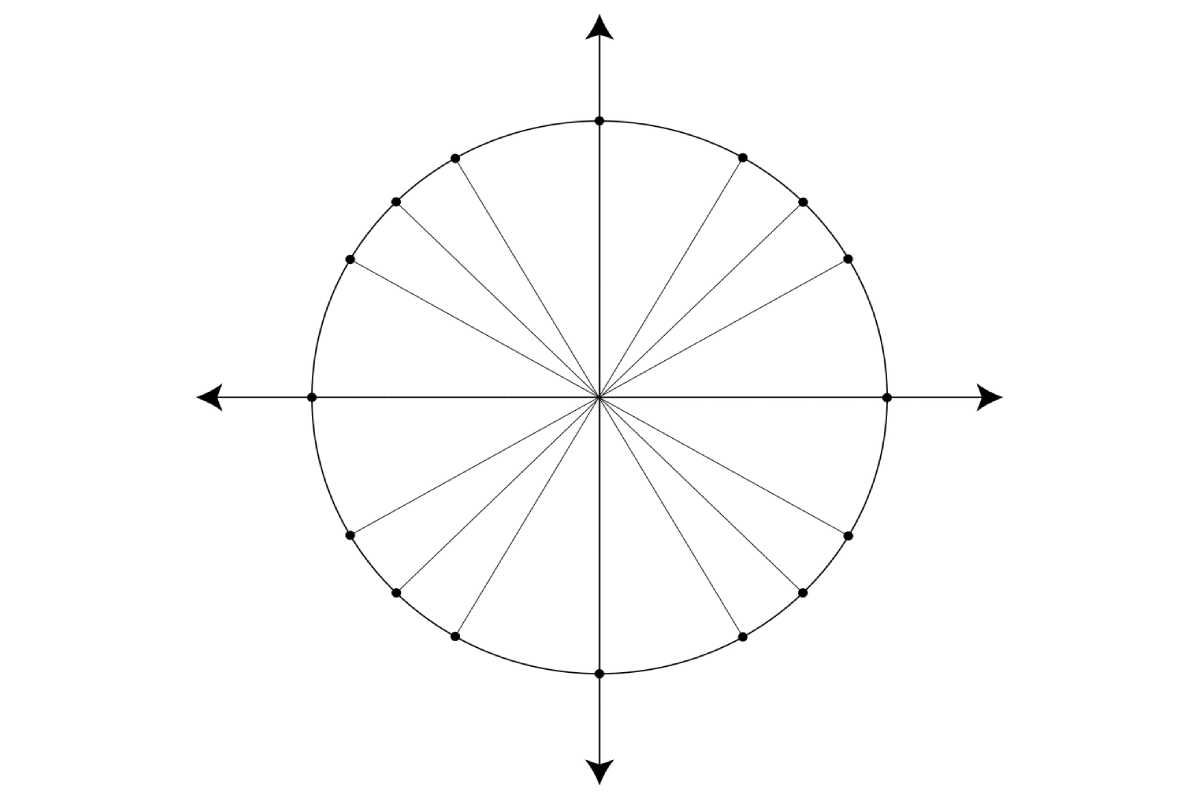Unit Circle and Its Applications

Unit Circle and Its Applications – In mathematical terms, a unit circle is a circle that has a radius of one unit and whose centre is located at the origin. Unit circle is generally represented in the cartesian coordinate plane and is algebraically represented with two variables x and y. Since it is a circle with a radius of one unit, it is simple to understand. We take its help to learn about various angles and lengths. It is used to calculate trigonometric functions, namely sin(θ), cos(θ), tan(θ), cot(θ), cosec(θ), and sec(θ). Let us understand in detail how unit circles help us in trigonometry.
Table of Contents
Trigonometric Functions from Unit Circle
You all might be aware of what trigonometry is. If not, let us understand now. It is a branch of mathematics that deals with specific angles and lengths of a triangle. Trigonometry is believed to have its origin from the Hellenistic world during the third century BC. It is extremely important for all of us to learn about trigonometry because many of the natural structures and shapes of the Earth resemble triangles. It plays an important role in areas of engineering, oceanography, electronics, biology, chemistry, game development, and the list continues. Now, a question will arise in your mind about how unit circle has relevance in trigonometry. Let us understand how.
How does Unit Circle help in Deriving Trigonometric Functions?
As we all know, a unit circle is formed with its centre at the point of origin that is at (0,0) and whose radius is one. Thus, the circumference of a unit circle is 2π. An arc of the unit circle has the same length as that of the measure of the central angle that intercepts that arc. The radius of the unit circle is one, so the trigonometric functions sine, cosine, and tangent have special relevance for the unit circle. We can find these trigonometric functions by applying the Pythagoras theorem. Let us take a right-angled triangle and understand how.
The radius present inside the circle of the right-angled triangle represents the hypotenuse. Let x be the altitude and y be the base. Now, we have a triangle with sides x unit, 1 unit, and y unit. If we apply the Pythagoras theorem, we get sin θ = y/1 and cos θ = x/1. Now, if we divide sin θ by cos θ, we arrive at the value of tan θ. Cosecant (cosec), secant (sec), and cotangent (cot) can also be easily obtained as these trigonometric functions are the reciprocal of sin, cosine (cos), and tangent (tan) respectively.
Understanding Pythagorean Identities Using Unit Circle
We have already discussed the Pythagoras theorem before. By definition, it states that the square of the hypotenuse of a right-angled triangle is equal to the sum of the other two sides of the triangle.
Formula: x.x + y.y = z.z
Where, z = hypotenuse of right triangle
y = base of the right triangle
x = altitude of the right triangle.
With the help of a unit circle, the three important Pythagorean identities of trigonometric ratios can easily be proved and understood. The three Pythagorean identities in trigonometry are discussed below:
- sin.sinθ + cos.cosθ = 1
- sec.secθ = 1 + tan.tanθ
- cosec.cosecθ = 1 + cot.cotθ
Unit Circle in Complex Plane
A complex number is the summation of a real number and an imaginary number. A complex plane in mathematics is a plane formed by an entire set of complex numbers. A unit circle has all complex numbers of absolute values as 1. Thus, it has the equation of |z| = 1. The unit circle can be seen as unit complex numbers in a complex plane that is the set of complex numbers z given by the form,
Z = eit = cos t + i sin t = cis(t).
If you want to learn more about unit circle and trigonometry in a fun and interesting way, visit Cuemath.

